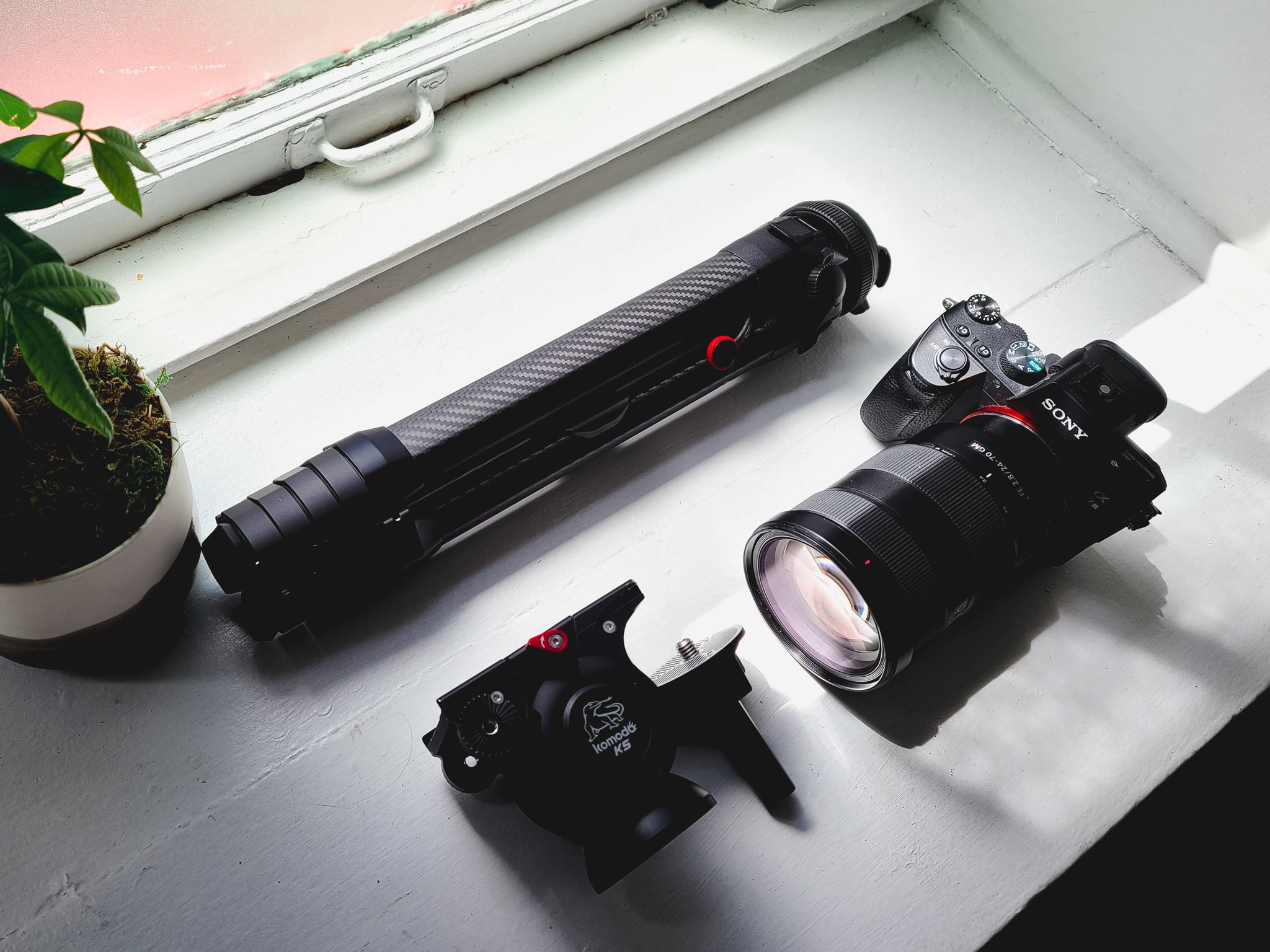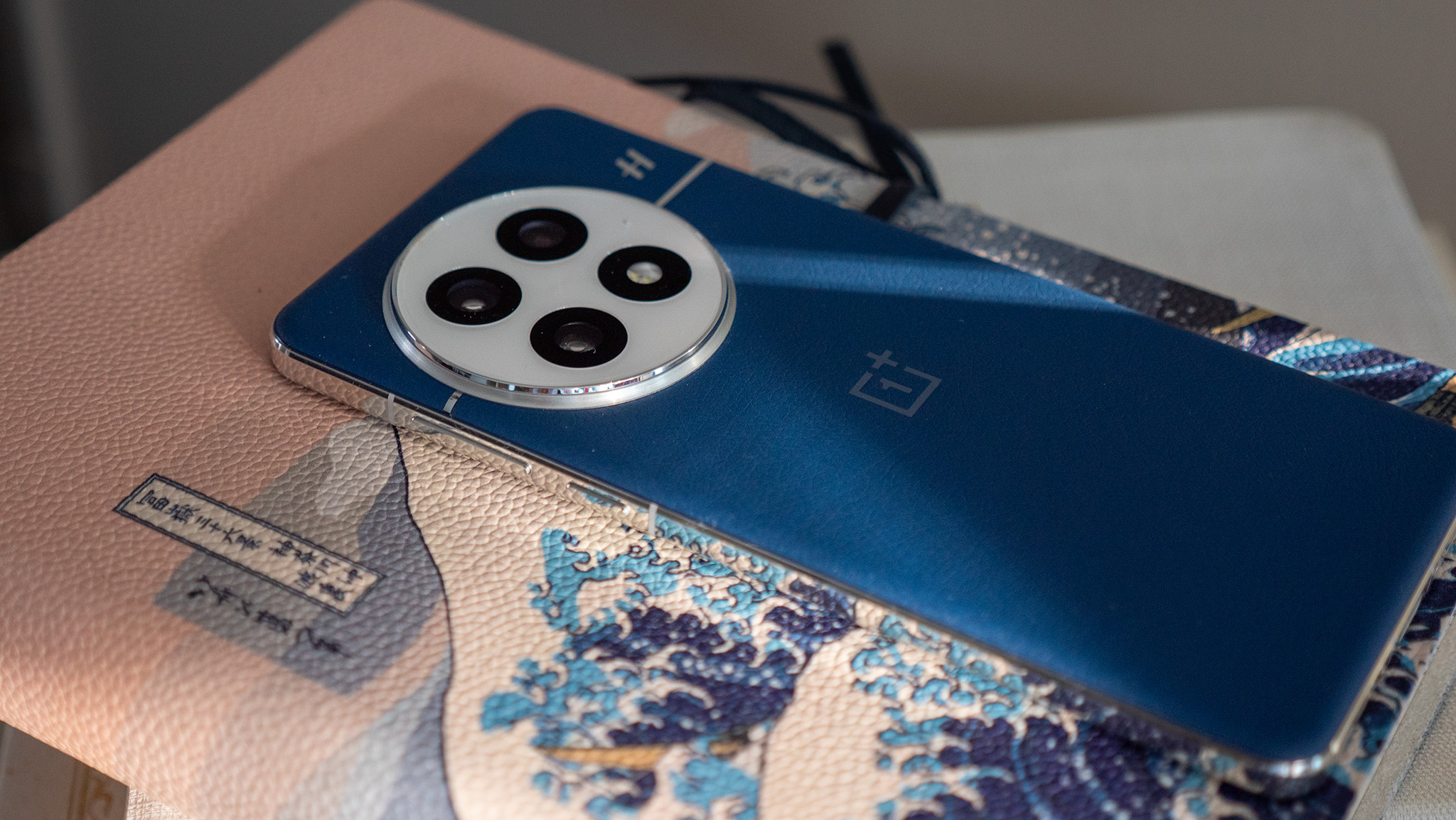Android Central Verdict
Bottom line: Peak Design's latest offering is one of the more expensive travel tripods I've seen, but it's well-built, compact, and as cleverly designed as you'd expect. The stock head doesn't allow for smooth panning, but you can use an adapter to add your own fluid head.
Pros
- +
Footprint of a water bottle
- +
Uses the popular Arca-Swiss plate
- +
Easily height-adjustable using cam locks
- +
Integrated phone mount
- +
Very lightweight
Cons
- -
Extremely expensive
- -
Stock head doesn't offer panning
- -
Adapter needed to use third-party heads
Why you can trust Android Central
As a traveling videographer (well, just a videographer at the moment), I've always had an obsession with two categories of gear that make my life a lot easier: backpacks and tripods.
After years of trying bag after bag, Peak Design more or less ended my search for the former with its Everyday Backpack line, which I've been a huge fan of since the original 20L model. Now, the San Francisco-based company aims to similarly shake up the tripod market with its Travel Tripod — a sleek, compact tripod with the clever design traits that Peak Design is known for.
The Travel Tripod is available in two material configurations — aluminum and carbon fiber — and two different price points. I've been testing the latter version since January, and it's since become a mainstay in both my traveling and home filming rigs.
Carbon Fiber Travel Tripod What I like
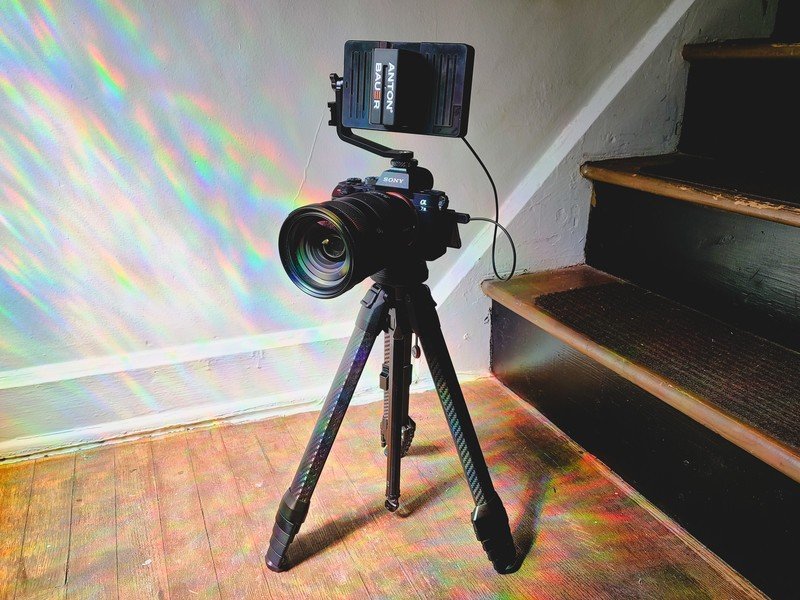
Peak Design gets a lot of things right with its first foray into tripods. The Travel Tripod comes in aluminum and carbon fiber configurations, and both share a remarkably striking design. I don't generally think of tripods as particularly good-looking products; they're there to serve a purpose and stay out of the shot, but the Travel Tripod looks great and feels incredibly well-made.
It feels like Peak Design thought of just about everything with its first tripod.
It's also, as you might expect if you've used any of the company's other products, cleverly designed. Most travel tripods, like the Sirui T-025X I was using before, feature circular legs that fold upward along the center column to fit more easily into side pockets on backpacks, but Peak Design had a different idea in mind. The Travel Tripod has much flatter, almost triangular legs that allow it to compact down to a footprint that's roughly the same size as a water bottle.
Not having to fold the tripod legs up saves a decent chunk of time when breaking down after a shoot, which is especially helpful when I'm leaving a time-sensitive press briefing or event. It also means that the tripod fits easily into the side pocket of a backpack, though you can also use Peak Design's Anchor attachment points to attach a strap if you'd rather not carry a whole bag.
Those legs are managed using aluminum cam locks, with four extension points and five sections per leg. You can extend the tripod all the way up to 60 inches (5 feet) — not quite as tall as my bulkier Manfrotto 190XPRO3 legs can reach, but it's better than most travel-oriented tripods I've used. There's also a convenient holder clipped onto one of the legs for the two included hex tools (one 4mm and one 2.5mm), which can be used for any maintenance on the Travel Tripod.
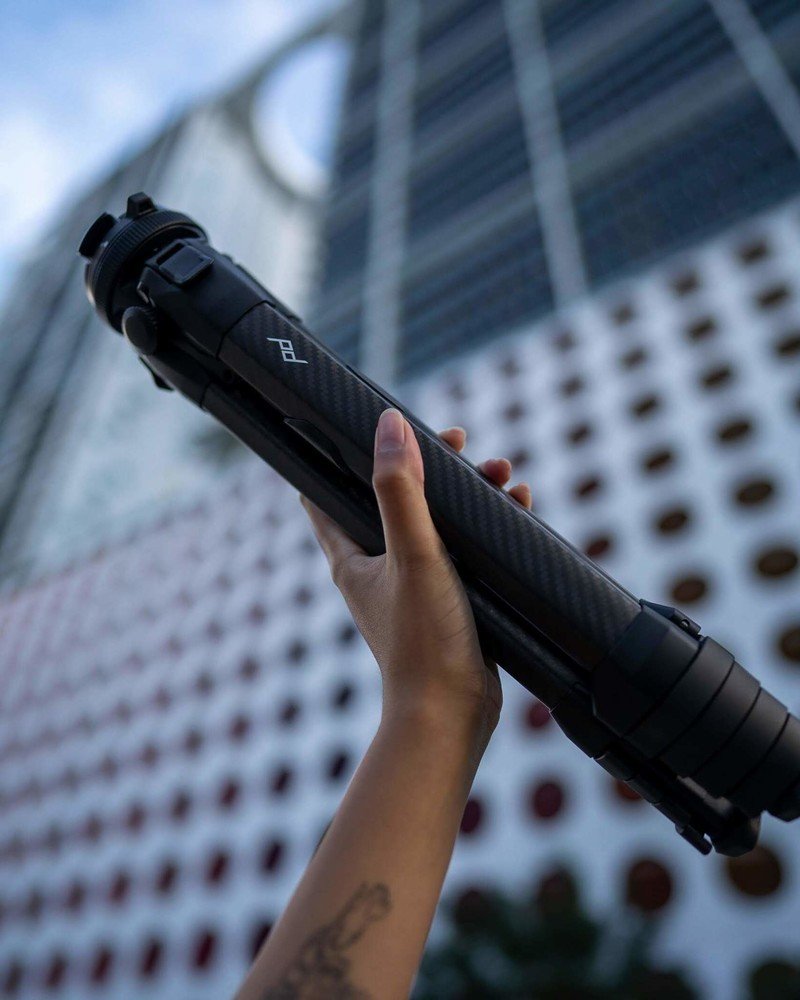
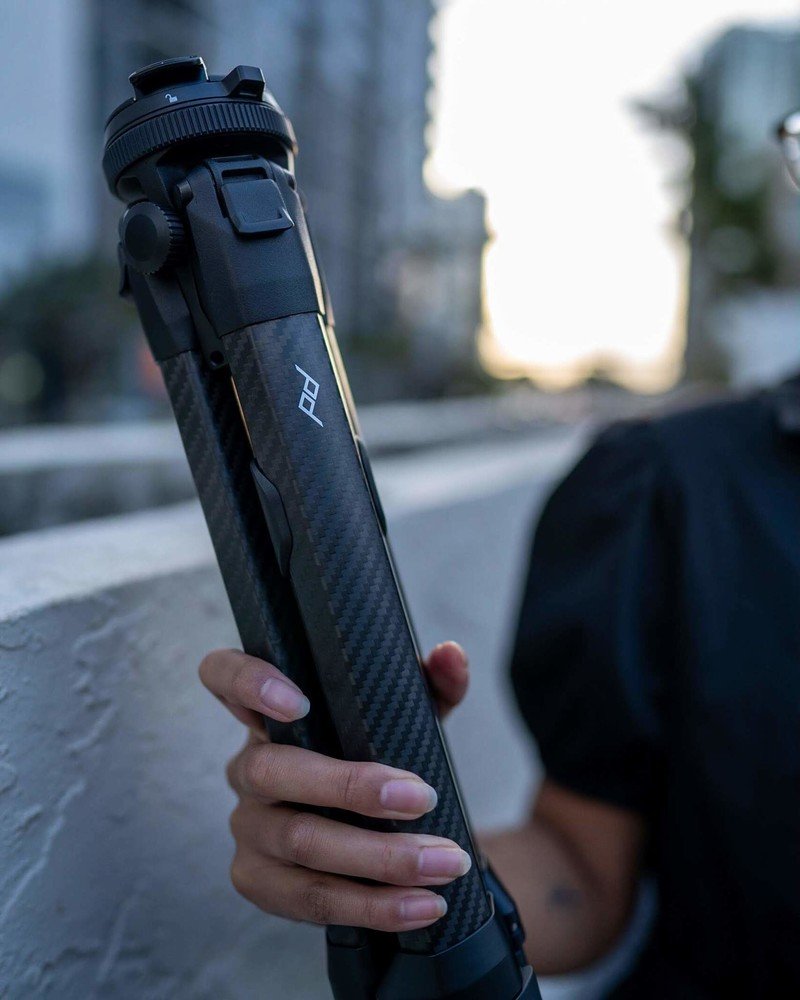
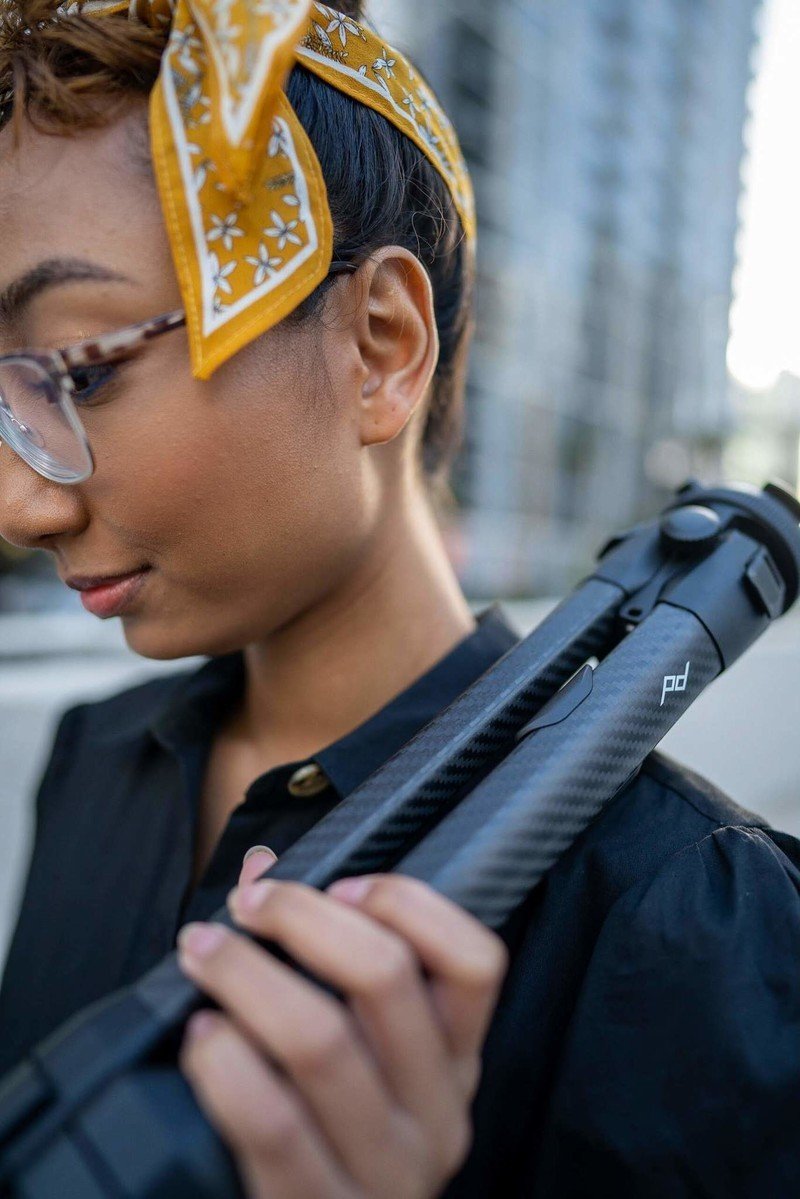
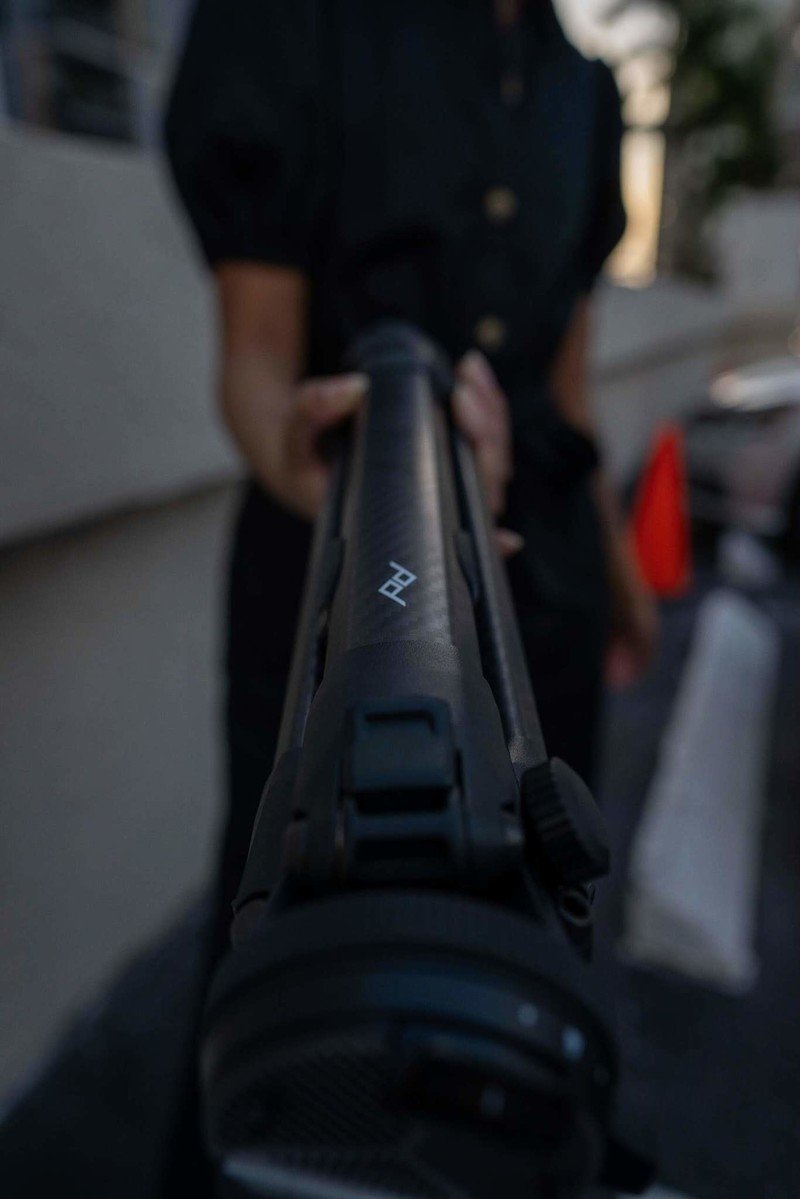
The main advantage of carbon fiber is its low weight, and the Carbon Fiber Travel Tripod weighs in at just 2.81 pounds (versus the 3.44 pounds of the aluminum alloy model). That makes it effortless to carry around, but not so lightweight that it can't support fairly heavy gear loads; Peak Design rates the Travel Tripod's capacity for up to 20 pounds.
That's partially thanks to the decision to stick with a sturdier aluminum center column, even on the carbon fiber version. That center column can be easily extended or retracted using the rotating knob at its base, which you can pull out a bit for an easier grip
At the bottom of the center column is one of the more clever design tricks of this tripod. There's a hook for hanging a counterweight like a backpack to the tripod (helpful for stabilizing the tripod with particularly heavy gear), but with a simple twist and pull of that hook, it detaches and reveals a hidden smartphone clamp that fits perfectly into the stock tripod head. It's a brilliant yet dead-simple tool that ensures you'll never need to carry a separate tripod mount for your phone.
As you'd expect, the Travel Tripod works remarkably well with Peak Design's other products.
Speaking of the stock head, I really love the ultra-low profile Peak Design managed with its compact ball head. The Travel Tripod uses the popular Arca-Swiss mounting system, which accepts the same plate used in many other tripods and even Peak's other products like its excellent Slide straps. If you're already using those types of products, this means you don't have to swap plates on your camera before moving between gear.
To mount your camera on the Travel Tripod, you wedge the Arca-Swiss plate between the aluminum stopper (which also features a handy spirit level) and the retention clamp, then twist the locking mechanism to hold it in place. There's a rotating dial sitting underneath that you can twist to allow the tripod head to move freely along the ball joint, then twist back to lock it in place at any angle you like.
If you remove the counterweight hook and phone clip from the center column, you can actually remove the head and center column from the tripod legs entirely, then replace them upside down to get low-to-the-ground shots. The Travel Tripod is great for getting nearly any type of static shot.
Carbon Fiber Travel Tripod What's not so great
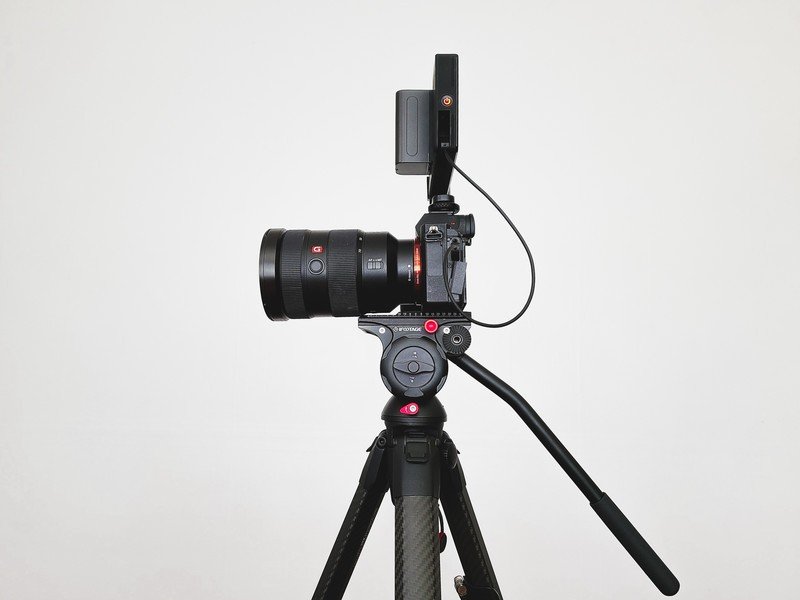
The Travel Tripod is an amazingly versatile tool for photographers ... but I'm primarily a videographer. Most of my camera work involves a lot of slow pans and following moving subjects mid-shot, none of which is really doable with the Travel Tripod by default. The ball head is great for getting virtually any angle without much fuss, but without a fluid cartridge there's just no way to get smooth camera movements.
If you're a videographer, the stock head won't do you much good.
Luckily, as with most other tripod legs, you can swap out the head for one of your own like a fluid head, but first you'll need to purchase the separately sold Universal Head Adapter. A $30 part may not seem like a big deal, but when you're already paying an arm and a leg for the tripod itself, it's a bit hard to swallow.
That adapter is also a bit of a pain to install. It uses three small screws in addition to the 3/8-inch thread to lock tripod heads into place; this prevents the head from rotating or wobbling during operation, a problem I constantly ran into with my previous travel tripod, but it also takes quite a bit of setup time and can badly scratch up the bottom of your tripod head. It's not the end of the world, but you certainly won't want to be swapping tripod heads very often.
And while using a third-party head is essential for panning shots (I've been using the iFootage Komodo K5), it also means that in most cases, the phone mount no longer works with the tripod since it's designed with the stock head in mind. That's a shame, since the added versatility the phone mount offers is one of my favorite features of the tripod.
Carbon Fiber Travel Tripod Should you buy it?
Of course, the biggest issue most people will run into is the Travel Tripod's price. It's a wonderful product, and it's quickly replaced both my Sirui travel tripod and my heavy-duty Manfrotto tripod as my go-to sticks for all types of filming — but at a whopping $600 for the carbon fiber model, it's a hard sell for just about anyone, especially if you're a videographer who will need to shell out even more money for the Universal Head Adapter and a fluid head.
For just over half the price, you can pick up the slightly heavier aluminum model instead at $350, but that's still a hefty price for a tripod that's almost entirely focused on photography. Generally, stabilizing features like fluid heads are what drive prices up in the first place, and there are plenty of cheaper tripods on the market if you don't need those features.
4 out of 5
But if you can look past the high price, you're getting an incredibly well-thought out tripod with a myriad of clever design traits and a slim, compact profile. It's light enough to move around with ease, even when fully extended, and it packs down quickly so you can move from one set to another at a moment's notice. I don't know that I can recommend the Travel Tripod too strongly to other videographers, but I'm certainly happy to have it in my rig.
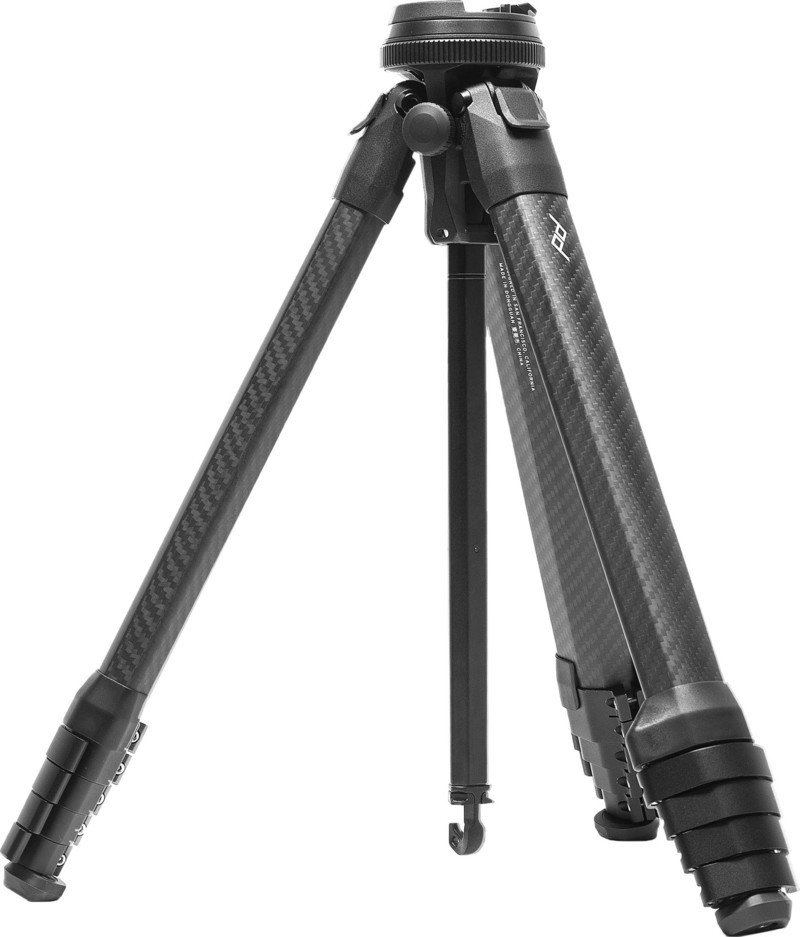
Peak's best backpack just got better.
Peak Design's latest offering is one of the more expensive travel tripods I've seen, but it's well-built, compact, and as cleverly designed as you'd expect. The stock head doesn't allow for smooth panning, but you can use an adapter to add your own fluid head.
Hayato was a product reviewer and video editor for Android Central.
